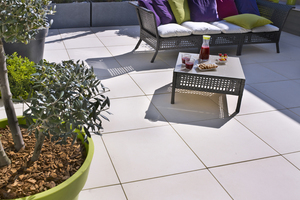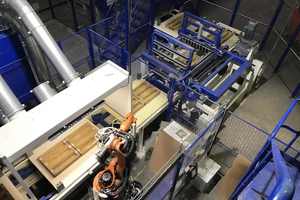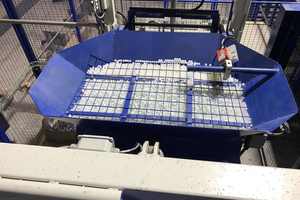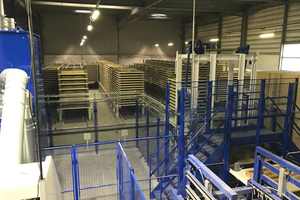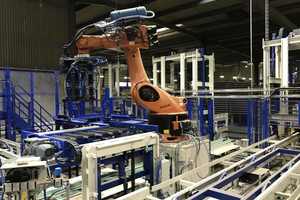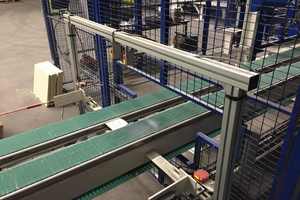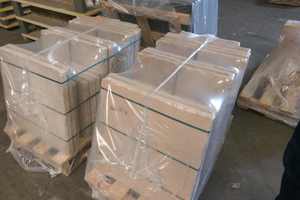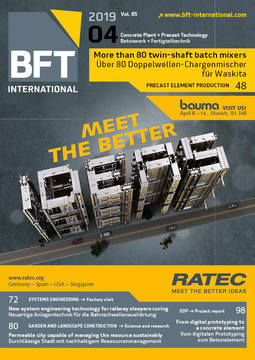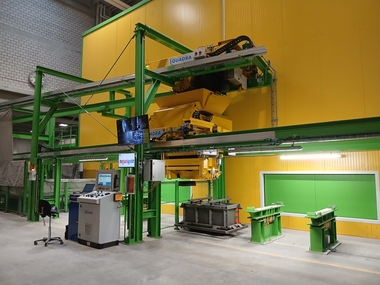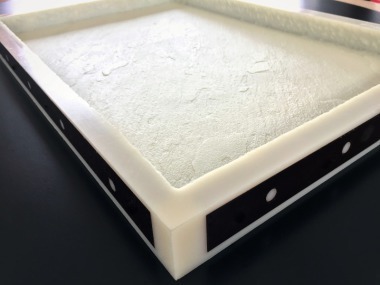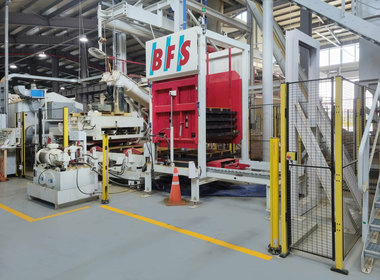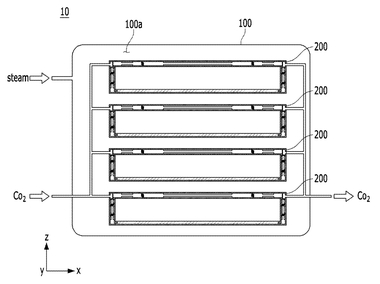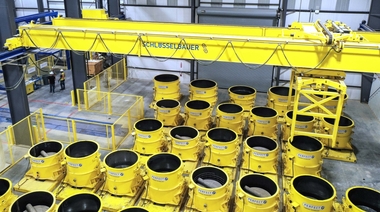Automation, reliability and efficiency in wetcast concrete block production
French Fabemi Group started out as a concrete product manufacturer but has since become a big player in the wetcast industry segment. The company operates 14 production sites and manufactures a wide range of concrete products for the landscaping market. Just recently, Fabemi invested in a new wetcast production line supplied by Quadra, the engineering company.
Just recently, Fabemi Group, a concrete product manufacturer based in southeast France (in Donzere in the Auvergne-Rhône-Alpes region), has established a partnership with Quadra, the French engineering company based in Contamine-sur-Arve. This cooperation gave rise to a complete overhaul of the Donzere production line, which is exclusively designed for manufacturing wetcast products, in order to improve product quality while reducing the amount of manual work to be performed by shop-floor staff.
Fabemi produces and delivers a wide range of concrete landscaping products under the Bradstone and Carré d’Arc brands, including pavers, slabs, retaining walls, wall coverings, and other landscaping and street furniture items.
Only four workers needed on the factory floor
This new handling system requires only four workers on the shop floor who supervise the complete production process, including mold oiling and filling, curing, demolding, mold cleaning, and palletizing of finished products. Each pallet comes with an integrated RFID tag as a means for controlling the individual work steps and identifying the specific types of product. Mold shapes and sizes can be monitored in real time, and operation of the production line and its work stations can be adapted to the specified recipe.
In the first step, an automatic trolley handles the empty mold stack and transfers it to the lowerator. The polyurethane molds are mounted on 1,400 × 1,100 mm plastic pallets supplied by Assyx.
Mold cleaning is performed using compressed air injected from below while turning over the molds. A 6-axis robot ensures repeatable, uniform oil application to all sides of the mold. The oil mist is evacuated through a ventilation cabin equipped with an extractor and filtering hood. The pallet is then transferred to the filling station. About 4,000 different recipes are stored for automatic filling. Concrete is discharged into the large feed hopper via four valves installed in four small hoppers fitted with load cells. The automated process ensures that concrete fed into the mold in a 15-second cycle (for four slabs) strictly adheres to the specified quantity. In the next step, the mold filled with fresh concrete is routed onto three vibrating tables whose frequencies are also automatically adjusted to mold data.
An automatic system places plastic balls as spacers in each corner of the product in order to prevent direct contact between concrete products and any associated curing marks on shipping pallets.
Product reference printing has also been automated using an inkjet printer whose printing height is automatically adjusted to the mold.
Product curing and demolding
Products are then transferred to the curing area via a conveyor and an automatic trolley. This trolley is equipped with geared servo motors allowing automatic settings as well as progressive acceleration and deceleration. Its position is continuously monitored through a laser system.
The curing station uses two automatic trolleys that complete the mold handling process by transferring them to the storage area. Molds are taken out according to the first-in, first-out principle to ensure optimum curing. One of the trolleys is dedicated to the wet side of the manufacturing area, whereas the other is operated on the dry side to move concrete products to the demolding line. The curing area can accommodate up to 360 stacks with 15 pallets each, which is equivalent to a total of up to 5,400 pallets. No separate foundation is needed thanks to the flat monolithic slab installed in the curing area.
Operators use a touchscreen that displays all the required information about product types and quantities, curing times, and production dates.
Demolding has also been automated – a Kuka KR360 6-axis robot provides the capacity required for demolding products weighing up to 120 kg. For this purpose, four independent vacuum pads move about two axes. In addition, the demolding station is equipped with an adjustable frame system holding the mold in place on the pallet. A clamping system allows demolding of undercut products without damaging them.
RFID tags enable the demolding robot to remove all types of product in an exceedingly wide range of shapes and dimensions.
A specially designed unit then turns the products about an angle of 180° such that their textured surface is placed face-side-up on the conveyor after demolding. A belt conveyor transfers the concrete products to the palletizing robot, where a production employee can perform quality control without disturbing the automated cycle.
Next step Palletizing
A measuring system equipped with laser units and sensors captures the product’s length, width and height as well as its center of gravity, and transfers this data to the palletizing robot.
This KR360 6-axis robot is fitted with a handling clamp with two grip pads. Its orientation, the type of grip, and the accurate positioning of the product on the shipping pallet are controlled using the transferred data referred to above. A conveyor then moves the pallet to the packaging line, where the concrete products are moved vertically for horizontal strapping.
The measuring system is crucial for managing the production process because it ensures access to all required information while making production data available in real time and enabling direct printing of daily activity reports.
The result: productivity, flexibility, versatility
Automating the Fabemi production line has increased its output whilst also improving the working conditions for shop-floor employees, for instance by significantly reducing the manual handling of heavy loads. Instead of 18 production workers required in the previous setting, only four employees are needed for supervising the complete production line while eliminating the need for manual intervention. The increased production capacity achieved, for example, by fully automated mold filling (in combination with the other process steps) has again improved the consistently high product quality.
Fabemi has thus strengthened its competitiveness and entered into new market segments.

